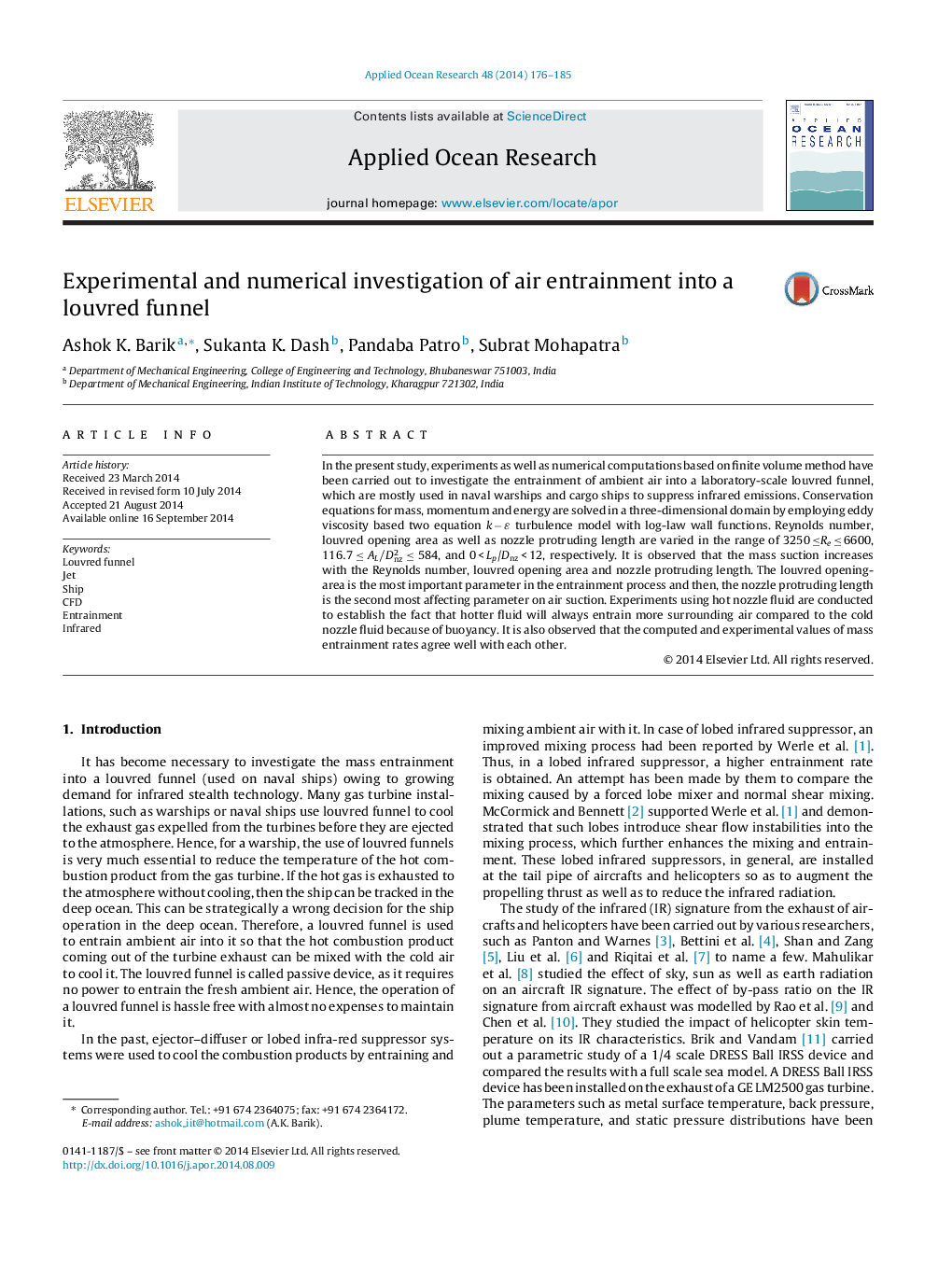| Article ID | Journal | Published Year | Pages | File Type |
|---|---|---|---|---|
| 1719998 | Applied Ocean Research | 2014 | 10 Pages |
•Experimental and numerical studies have been carried out for a laboratory-scale louvred funnel used in the naval and cargo ships.•The entrainment rate is found to be a function of nozzle exit Reynolds number, nozzle protruding length, and diameter of louvred funnels.•The louvred opening area (AL/Dnz2) has a significant effect on the entertainment rate.•Hot nozzle fluid entrains more air into the louvred funnel than the cold nozzle fluid because of buoyancy.
In the present study, experiments as well as numerical computations based on finite volume method have been carried out to investigate the entrainment of ambient air into a laboratory-scale louvred funnel, which are mostly used in naval warships and cargo ships to suppress infrared emissions. Conservation equations for mass, momentum and energy are solved in a three-dimensional domain by employing eddy viscosity based two equation k − ɛ turbulence model with log-law wall functions. Reynolds number, louvred opening area as well as nozzle protruding length are varied in the range of 3250 ≤Re ≤ 6600, 116.7≤AL/Dnz2≤584, and 0 < Lp/Dnz < 12, respectively. It is observed that the mass suction increases with the Reynolds number, louvred opening area and nozzle protruding length. The louvred opening-area is the most important parameter in the entrainment process and then, the nozzle protruding length is the second most affecting parameter on air suction. Experiments using hot nozzle fluid are conducted to establish the fact that hotter fluid will always entrain more surrounding air compared to the cold nozzle fluid because of buoyancy. It is also observed that the computed and experimental values of mass entrainment rates agree well with each other.
